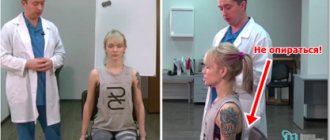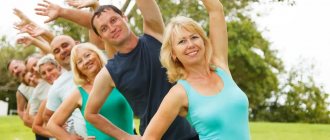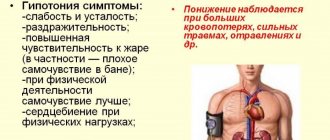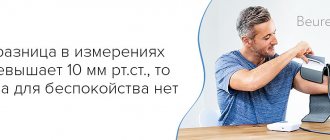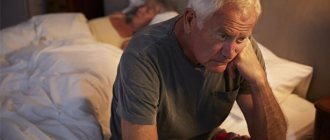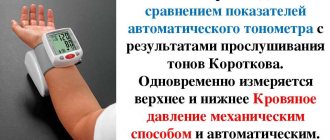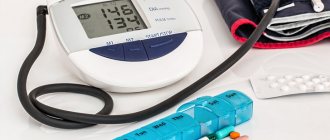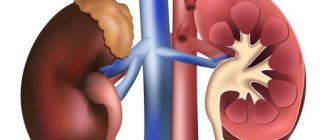Once you master the whole complex, you won’t need medications.
by rehabilitation therapist Alexander Shishonin will help reduce blood pressure and get rid of headaches
— Often, hypertension is a consequence of cervical osteochondrosis, when the first cervical vertebra, the atlas, is displaced and compresses the vessels supplying the brain. The brain receives little oxygen and instructs the heart to increase the strength and frequency of heart contractions. The pressure rises and blood flow to the brain increases. As a result, hypertension develops.
In this case, it is useless to take pills. It is necessary to strengthen the neck muscles in order to eliminate instability of the atlas (less often, of another cervical vertebra) and to free the vessels compressed by the vertebrae and spasmed by the muscles. Then the pressure will return to normal. The simplest gymnastics that you can do at home will help with this.
It's the same with chronic headaches. They are often caused by tension and spasm in the neck muscles. Especially if a person is constantly under stress: he instinctively presses his head into his shoulders to protect himself. As a result, blood microcirculation and nutrition of surrounding tissues are disrupted, intervertebral discs and ligaments are weakened, the vertebrae become unstable and compress the blood vessels.
To understand whether blood flow through the vertebral arteries is impaired, you need to do an ultrasound. If vascular compression is confirmed, you can begin gymnastics.
At first, it is better to practice while sitting in front of a mirror to control every movement.
Three exercises with warm-up and stretching are express gymnastics. The full set contains 12 exercises. You can find them on the website “Club of Former Hypertensive Patients”
You can perform gymnastics every day or every other day. However, if after a month after classes you do not feel significantly better, you should seek professional help. Perhaps the vertebra or vessel is located atypically. This means that a universal option is not suitable.
What is the essence of the course?
Gymnastics for the neck, developed by Dr. Shishonin, is intended to get rid of intense pain, limited movement, tension and other unpleasant symptoms associated with the development of the pathological process. The set of exercises is aimed at training the muscular corset of the cervical spine, therefore it has a therapeutic effect, reduces the symptoms of the disease, improves the condition, and returns the normal position of the vertebrae.
Dr. A. Shishonin developed gymnastics for everyone who leads an inactive or sedentary lifestyle and suffers from headaches and chronic fatigue. Such exercises are useful not only for people with osteochondrosis, but also for those suffering from hypertension and impaired vertebral mobility. The main positive aspects include the restoration of blood microcirculation in the area of damage, the elimination of spasm and pain, the removal of tension and stiffness, and the return of mobility. Many patients report restoration of high quality sleep after simple exercises.
Why do adverse events occur after coronavirus vaccination?
The vaccine familiarizes the immune system with the virus, and an immune response is launched in response to foreign interference.
A local reaction occurs - in response to damage to the skin and the introduction of the vaccine, cells of the first line of defense rush there. They must prevent the spread of infection that has been able to overcome the skin barrier. This is manifested by swelling and redness at the injection site.
The vaccine then enters the bloodstream. This forces the immune system to react to a possible threat and triggers defense mechanisms. Antibodies are produced to remember and destroy the invading virus. In addition, the body seeks to weaken the enemy and prevent the virus from multiplying quickly while the antibodies look for a way to destroy the enemy. One way is to heat the body, since many viruses cannot tolerate high ambient temperatures.
All together this can cause a typical reaction: fever, muscle weakness, headache. How severe the adverse events will be depends not so much on the vaccine, but on the individual characteristics of the body. After all, one person tolerates the same infection calmly, while another with a temperature of under forty. Most patients do not experience any reactions after vaccination.
The importance of physical therapy for cervical osteochondrosis
Therapeutic exercise (physical therapy) is a preventive exercise that prevents exacerbation of various diseases and is used very effectively for cervical osteochondrosis. Repeating the same exercise several times brings undeniable benefits. Exercise therapy significantly improves the patient’s condition and helps cope with pain. Osteochondrosis gradually recedes, because after exercise therapy:
- blood supply noticeably improves;
- the muscles of the neck and back are strengthened;
- the spine in the neck area becomes mobile;
- pinched nerves are restored;
- improves neck flexibility and shoulder movement;
- pain decreases.
How eye exercises work
Eye exercises not only help to get rid of the symptoms of fatigue: it is often prescribed by ophthalmologists for vision disorders - myopia, farsightedness and astigmatism. Eye training can be used to prevent vision deterioration, and it is best to start doing it right from childhood. There are a large number of exercise options, but they are all aimed at solving the following problems:
- relaxation of the eye muscles;
- improved focusing;
- stimulation of the lacrimal glands (which is especially useful against dry eyes);
- improving blood circulation and oxygen saturation of tissues;
- elimination of symptoms of nerve spasms and visual discomfort.
Despite the effectiveness of exercises for improving vision, they have contraindications:
- infectious diseases and inflammation - gymnastics can increase pain;
- retinal detachment - doing eye exercises with this diagnosis is simply dangerous, since blood flow to the eyes can lead to retinal rupture;
- rehabilitation period after eye surgery - during this time the eyes need complete rest.
In any case, if you have any doubts or experience discomfort during gymnastics, you should consult a doctor who will select an individual level of stress for you based on your medical history and advise you on how to train correctly.
Gymnastics for neck muscles
Exercise “Metronome”
Starting position – head straight. Gently tilt your head to the side, as if trying to reach the edge of your shoulder with your ear. Feel the stretch in the muscles opposite the bend. Stay in this position for 5-10 seconds. Then smoothly return to the starting position. Next, tilt your head in the other direction, also trying to reach the edge of your shoulder with your ear. Stay in this position for 5-10 seconds. Smoothly return to the starting position. Repeat 5-7 times.
Exercise metronome
Exercise metronome
Exercise “Spring”
Starting position – head straight. Smoothly move your head forward and lift your face up slightly. Close your eyes. Feel the tension in the back of your neck and the stretch in the muscles in the front of your neck. Stay in this position for 5-10 seconds. Then smoothly return to the starting position. Next, move your head back, slightly lowering your face down. Feel the tension in the muscles at the front of your neck. Stay in this position for 5-10 seconds. Smoothly return to the starting position. Perform the exercise 5-7 times.
Exercise spring
Exercise spring
Exercise “Goose”
Starting position – head straight. Gently and slowly move your head forward without changing your tilt. Then smoothly turn your head to the left and press your chin to your left collarbone. Feel the tension in the front neck muscles and the stretch in the back neck muscles. Stay in this position for 5-10 seconds. Then smoothly reverse the movement and return to the starting position. Perform the exercise in the other direction. Repeat this neck exercise 5-7 times on each side.
Exercise goose
Exercise goose
Exercise “Looking at the Sky”
Turn your head to the side. Then smoothly lift your face up, as if “looking at the sky.” Stay in this position for 5-10 seconds. Then gently lower your head and turn it to its original position. Turn your head in the other direction. Raise your head and hold again for 5-10 seconds. Smoothly return to the starting position, performing the movements in reverse order. The exercise should be repeated 5-7 times in each direction.
Exercise Looking to the Sky
Exercise Looking to the Sky
Exercise “Frame”
Keep your head straight. Place your left hand on your right shoulder. Raise your left elbow to chin level. Gently turn your head to the left and press your chin to your left shoulder. Stay in this position for 5-10 seconds. Then smoothly turn your head to a straight position. Lower your left hand. Place your right hand on your left shoulder. Turn your head to the right and tuck your chin toward your right shoulder. Hold for 5-10 seconds. Smoothly return to the starting position. Repeat the exercise 5-7 times in each direction.
Exercise Frame
Exercise Frame
Exercise Frame
Exercise Frame
Exercise “Fakir”
Head straight. Raise your arms above your head and clasp your palms together. Lightly press your palms together using force. Turn your head to one side. Stay in this position for 5-10 seconds. Then smoothly turn your head in the other direction. Also hold in this position for 5-10 seconds. Repeat the exercise 5-7 times in each direction.
Exercise Fakir
Exercise Fakir Exercise Fakir
Exercise Fakir
Exercise “Airplane”
This exercise strengthens the muscles of the shoulder girdle - trapezius and deltoid. Improves blood circulation in the neck muscles.
Keep your head straight. We spread our arms to the sides. We smoothly move them back. We hold our hands in this position for 5-10 seconds. Smoothly return your hands to the starting position. Then we lower one hand lower and raise the other higher. We take them back again and hold them for 5-10 seconds. We smoothly return to the starting position. We change the position of the hands to the opposite and again move them back for 5-10 seconds.
Repeat the exercise in each position 5-7 times.
Exercise Airplane
Exercise Airplane
Exercise Airplane
Exercise “Heron”
Starting position – head straight. We stretch our face up. We move our arms back and slightly to the sides. We stretch our hands down. We feel a stretch in the front of the neck, chest muscles, shoulders, arms. The exercise is performed for 5-10 seconds. Then we return to the starting position. Repeat 5-7 times.
Exercise Heron
Exercise Heron
Exercise “Tree”
In a sitting position, raise your arms up with your palms facing up. We stretch upward for 5-10 seconds. Repeat the exercise 3-5 times.
Exercise Tree
Lateral neck stretch
Grasp your head with your left hand, placing its palm on your right ear. Gently tilt your head to the left, helping yourself a little with your left hand. Stay in this position for 5-10 seconds. Feel the muscles on the right side of your neck stretch. Gently return to the starting position. Then clasp your head with your right hand. Tilt your head to the right for 5-10 seconds. Feel the stretch in the muscles on the left side of your neck. Repeat the exercise 3-5 times in each direction. Don't try too hard!
Lateral neck stretch
Lateral neck stretch
Posterior neck muscle stretching exercise
Clasp your hands at the back of your head. Gently tilt your head forward, helping yourself slightly with your hands. Stay in this position for 5-10 seconds. Feel the stretch in the muscles at the back of your neck. Return to the starting position. Repeat the exercise 3-5 times with short breaks. Don't use too much force when stretching your neck muscles!
Posterior neck stretch
Oblique stretch for the posterior neck muscles
Clasp your hands at the back of your head. Turn your head to the side and bend it forward, helping yourself slightly with your hands. Stay in this position for 5-10 seconds. Feel the stretch in the muscles at the back of your neck. Return to the starting position. Then turn your head to the other side and bend over, helping yourself with your hands. Repeat the exercise 3-5 times in each direction. Don't try too hard when stretching your neck muscles!
Oblique stretch for the posterior neck muscles
Oblique stretch for the posterior neck muscles
After gymnastics, sit still for a minute, do not rush to get up. Allow blood circulation to be restored in the neck area. Take a few calm breaths in and out.
These neck exercises are especially good in the evening before bed. Be healthy!
Neck exercises. How to pump up your neck muscles.
- 28
- 79
- 1
Undesirable effects of other Russian vaccines
"CoviVac"
This is an inactivated vaccine. That is, a killed coronavirus is delivered to the body. This is an old and proven technology, many vaccines against viral diseases have been made using it: polio, influenza and others. Dead viruses cannot cause disease, but their entry is enough for the body to learn to recognize them. As a result, when a live virus enters from an infected person, a strong immune response is formed immediately.
To enhance the immune response, aluminum hydroxide was added to CoviVac. One dose contains up to 0.5 mg. This dose is much less than permissible.
The instructions for the drug say that the vaccine can rarely cause headaches and short-term fever. Pain and hardness at the injection site are more common.
"EpiVacCorona"
This vaccine differs from Sputnik V and CoviVac in that it is not created using viruses. It is not killed or neutralized virus particles that are introduced into the body, but artificially created proteins. Using them, the immune system is trained to recognize real viruses. This method of creation reduces the reactogenicity of the vaccine, so it is recommended for vaccination in elderly or weakened people.
In a publication in the Russian journal Infection and Immunity, the vaccine developers claim that the only adverse events were mild pain at the injection site. And the CoviVac vaccine does not cause headaches, muscle weakness and other common symptoms.
Old age is not a reason to get sick
– Perhaps it is simply convenient for doctors to attribute the occurrence of diseases to age?
– I am sure that by using such a term as “age-associated diseases”, modern medicine is simply admitting its ineffectiveness. For example, there is a popular term in gerontology “sarcopenia”, or decreased muscle mass. Doctors attribute it only to age. But you can build muscles! You just need to establish blood flow in the vertebral arteries, restore nutrition to the cerebellum, which is responsible for coordinating movements, and then start working on the simulators. There are no age restrictions for this; you can do it even at 90 years old!
We do not use classical manual therapy in our clinic, since our main population is elderly and very elderly people prone to osteoporosis. We work with the neck gently, atraumatically, and only after training on special simulators that strengthen the deep muscles.
Article on the topic
My own vertebrologist. An expert on what to do if your neck hurts
– What does improving blood flow in the cervical region provide?
– First of all, nutrition is established in the brain stem, which regulates the functioning of the entire body (primarily the liver and pancreas). The extra load is removed from the heart. Then the hypothalamus, realizing that it already has enough oxygen, begins to consume less glucose. Therefore, in patients who exercise regularly and at the same time adhere to a thermodynamic diet, hypertension first goes away, and then type 2 diabetes mellitus. After all, when the brain stem is well supplied with blood and oxygen, all processes go correctly. In this situation, there is no longer any need to take pills that can only mask the symptoms.
– Are you generally against any pills?
- Of course not. I am a supporter of taking pills in situations where they are needed. For example, antibiotics are needed for pneumonia, vitamins for established deficiencies, mild sedatives for stress, painkillers for acute situations and injuries. However, when analgesics and NSAIDs are abused, the gastric mucosa suffers and bone marrow poisoning occurs. Therefore, you need to take pills in moderation. And in the treatment of any chronic non-infectious diseases they are not needed at all. The effect can be achieved in another way.
– What are the most beneficial exercises for health?
- This is normal walking. There is nothing more useful. But only continuous walking at an active pace for an hour (about 6 km) will be effective. Before this, you need to do neck exercises to help open blood flow in the brain stem (this should be done at least three times a week). Well, proper nutrition is also important.
Sticks in hand! 8 reasons to take up Nordic walking Read more
Why fill out a vaccination diary at State Services?
You can register possible adverse events on the government services website. This is necessary in order to collect as many statistics as possible and draw broader conclusions about the safety of the vaccine. This is especially important if the administration of the vaccine in a particular case is accompanied by serious adverse reactions.
In most cases, adverse events from vaccination go away within a short time without harm, unlike coronavirus infection. So far, there have been no serious complications or deaths reliably linked to Sputnik V or other Russian vaccines.
General recommendations
Therapeutic gymnastics is usually carried out in the hall, without music, with breathing controlled during the process. But before you start performing the treatment complex, you should consult with your doctor and familiarize yourself with the basic rules for performing the approaches. Recommendations usually include the following:
- All approaches are performed in a sitting position, it is important to keep your head straight and not slouch.
- Before performing the complex, you should warm up your muscles. Light self-massage is suitable for this.
- There should be no tension created in the process; all approaches are performed without effort.
- It is important to control your breathing; it should be calm, rhythmic, without delays.
- It is forbidden to perform exercises outside, in a draft, as the neck muscles warm up and are easy to get cold.
- You should devote a little time to gymnastics in the morning and evening.
Gymnastics does not require special training from the patient and is suitable even for people with poor health. It rarely takes more than 20-30 minutes to complete the entire complex, which allows you to always find time during the day. The exercises are performed without the use of special equipment; if you wish, you can do them at home or even at work, since the main thing is to get comfortable.
